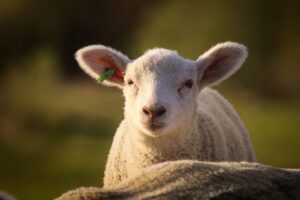Summer Planning for Sheep & Goat Producers
go.ncsu.edu/readext?1005994
en Español / em Português
El inglés es el idioma de control de esta página. En la medida en que haya algún conflicto entre la traducción al inglés y la traducción, el inglés prevalece.
Al hacer clic en el enlace de traducción se activa un servicio de traducción gratuito para convertir la página al español. Al igual que con cualquier traducción por Internet, la conversión no es sensible al contexto y puede que no traduzca el texto en su significado original. NC State Extension no garantiza la exactitud del texto traducido. Por favor, tenga en cuenta que algunas aplicaciones y/o servicios pueden no funcionar como se espera cuando se traducen.
Português
Inglês é o idioma de controle desta página. Na medida que haja algum conflito entre o texto original em Inglês e a tradução, o Inglês prevalece.
Ao clicar no link de tradução, um serviço gratuito de tradução será ativado para converter a página para o Português. Como em qualquer tradução pela internet, a conversão não é sensivel ao contexto e pode não ocorrer a tradução para o significado orginal. O serviço de Extensão da Carolina do Norte (NC State Extension) não garante a exatidão do texto traduzido. Por favor, observe que algumas funções ou serviços podem não funcionar como esperado após a tradução.
English
English is the controlling language of this page. To the extent there is any conflict between the English text and the translation, English controls.
Clicking on the translation link activates a free translation service to convert the page to Spanish. As with any Internet translation, the conversion is not context-sensitive and may not translate the text to its original meaning. NC State Extension does not guarantee the accuracy of the translated text. Please note that some applications and/or services may not function as expected when translated.
Collapse ▲
Happy Sheep
As the summer months approach, sheep and goat producers need to take proactive steps to ensure the health, productivity, and well-being of their livestock. Here are some key considerations and planning tips:
1. Heat Stress Management
- Shade and Shelter: Ensure ample shaded areas and proper shelter to protect animals from extreme heat. Natural shade (trees) and artificial structures (sheds) are essential.
- Hydration: Provide constant access to clean, cool water. Monitor water sources frequently to ensure they are not depleted or contaminated.
- Ventilation: Ensure good airflow in barns and shelters to keep animals cool. Fans and ventilation systems can help.
2. Pasture Management
- Rotational Grazing: Implement rotational grazing practices to prevent overgrazing and allow pastures to recover. This ensures a continuous supply of fresh forage.
- Forage Quality: Monitor the quality and quantity of available forage. Supplement with hay or other feeds if pastures are insufficient.
- Weed Control: Regularly inspect pastures for toxic plants and weeds. Remove harmful vegetation to prevent poisoning.
3. Parasite Control
- Deworming: Develop a deworming schedule based on fecal egg count monitoring. Use effective anthelmintics and rotate classes to avoid resistance.
- Pasture Hygiene: Rotate pastures and manage manure to reduce parasite loads. Consider using multi-species grazing to break parasite cycles.
4. Nutritional Management
- Balanced Diet: Ensure a balanced diet that meets the nutritional needs of your animals, especially lactating females and growing kids/lambs.
- Mineral Supplements: Provide mineral supplements, particularly salt and trace minerals, to prevent deficiencies.
5. Breeding and Reproduction
- Breeding Plans: Plan breeding schedules if aiming for specific lambing/kidding seasons. Ensure bucks and rams are in good health and condition.
- Pregnancy Management: Monitor pregnant females for signs of heat stress and nutritional needs. Provide extra care and supplements as needed.
6. Health Monitoring
- Regular Check-ups: Conduct regular health checks to monitor for signs of illness, heat stress, and parasites.
- Vaccinations: Stay up-to-date with vaccinations to prevent common diseases. Consult with a veterinarian for a tailored vaccination schedule.
7. General Maintenance
- Fencing: Inspect and repair fences to prevent escapes and predator access.
- Foot Care: Maintain regular hoof trimming to prevent foot rot and other hoof problems exacerbated by wet conditions.
8. Emergency Preparedness
- Emergency Supplies: Stock up on necessary supplies, including medications, electrolytes, and first aid kits.
- Disaster Plans: Develop and review emergency plans for heatwaves, droughts, and other potential summer hazards.
By planning ahead and addressing these critical areas, sheep and goat producers can ensure their animals remain healthy and productive throughout the summer months. Proper preparation leads to better outcomes and a successful season.




